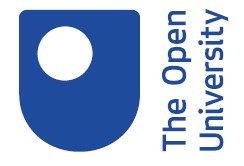Following the Future Mobility webinar hosted by the Arc Leadership Group earlier this year, Mike Axon, Managing Director of transport consultants, Vectos, shares his blog “Vision and Validate”, on how to effectively design for the future transport requirements across our region.
Jessie Potter: “If you always do what you’ve always done, you’ll always get what you’ve always gotten”. So don’t do it!
Unless we want to get what we’ve always gotten. Which we really don’t, as it includes rising carbon emissions, climatic instability, poorer health and not enough social inclusion, and where, in terms of emissions, transport is the biggest culprit.
Yet the scourge of planning for accessibility is the sometimes used ‘what if’ scenario, that distils every thing back to traffic and not just that, but pre-COVID commuter peak hour traffic convenience.
There is a Fundamental Law when it comes to traffic in increasingly busy situations. The volume of traffic is a function of the available roadspace. This is well documented, including by Lewis and Mogridge, Hills, Litman, Aldred and many others.
This is the essence behind enabling Vision & Validate, which is simply to decide what we want to see and design for it. In this, traffic is but one element, and critically it can be limited, if need be, by the availability of roadspace.
It is the antithesis of the old fashioned ‘Predict & Provide’ where we predicted how many people might like to drive somewhere in a commuter peak and provided the capacity for them to do so, the consequence of not doing so, we feared, being that chaos would reign.
In policy, guidance and masterplanning, Predict & Provide has been all but abandoned. The CIHT, TCPA, TRICS, and last week the DfT in Decarbonising Britain, all say so in the context of designing new or extended communities. Yet sometimes we find it frustratingly difficult to practically abandon it, to separate ourselves from the ‘what if’ sustainability, masterplanning and local living doesn’t work attitude, and head towards the safety of another road or a bigger junction ‘just in case’. Garden settlements and urban extensions often design for local living and sustainable connectivity, but then sink investment into bigger roads and junctions on a ‘worst case’ basis that maximum traffic will come what may.
There is another quote, often attributed to Einstein, saying that the definition of insanity being doing the same thing over and over, but expecting different results.
The thing is, going back to the Fundamental Law, this resort to road building approach is self-perpetuating. It generates traffic, and it diverts funds away from better placemaking, social housing and other elements that create best communities. The worst of all worlds.
There are two matters; forecasting how people are likely to get accessibility, and Vision & Validate, which influences the first.
To be clear, we do not have to accommodate a traffic demand. We may choose to, but that is a different matter. Maybe though we should feel that we do have to accommodate a maximum (call it worst case) demand for local living, for walking, for cycling and scooting, and use of shared transport, including public transport.
The evidence is that most people like, and do, get accessibility locally. They do this now, and the evidence is there in the ONS, NTS and Census data. It satisfies the common sense test as well. Major reasons for travel are education and leisure, including shopping. Most school travel is local, no matter the mode. Visiting friends, nipping to the shop for a pint of milk, going for a walk, are all day-to-day activities that make a community, and that are undertaken in a community.
The world of work has changed, and there is little doubt that it has changed forever. It was changing before COVID, and it will be more so post-COVID. In existing communities we were seeing in the order of 30-50% local travel to work, plus about 15-25% of people working from home at any one time (the sum of the occasional and habitual home worker). The firm expectation is that post-COVID, that latter figure will have settled at 30-40% depending on the working profile, as obviously only a sector of society can work from home or a Third Place.
In existing towns, overall local living was in the order of 65-75% pre-COVID. One might expect that by design new settlements or urban extensions can and should do better.
New settlements can provide big wins in climate, health and local economy, and to do so here is a simple recipe:
- Design for local living – size matters
- Design for local living – accessibility to be combinations of digitally and physically (phygitally)
- Location matters – design excellent connectivity, in order of priority by active travel, shared travel and then single occupancy car travel to those connecting centres for economic stimulus and higher order social and retail offers
- Traffic matters – but not as much as it used to, and there is no direct reason to accommodate a forecast demand (Predict & Provide).
This means that the bar is set high before triggering reasons to invest in providing added traffic capacity, and that the priority for such investment is below that of creating the best community and best non-traffic connectivity. As a result, landscape and masterplan led schemes, in which accessibility and transport are components in design, not pass/fail tests of impact, are likely to create the best places.
 Mike Axon is Managing Director of Vectos, one of the largest independent consultancies in transport planning, infrastructure design and flood risk in the UK.
Mike Axon is Managing Director of Vectos, one of the largest independent consultancies in transport planning, infrastructure design and flood risk in the UK.









